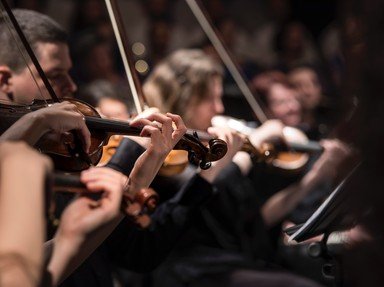Quiz Answer Key and Fun Facts
1. Grazyna Bacewicz left us several compositions for solo violin. Her first Capriccio mentions her nationality. So what is the title of Bacewicz' first Capriccio?
2. Which prolific Baroque composer, best known for his keyboard works, left us six sonatas and partitas for solo violin?
3. Which Hungarian pianist and composer has created two violin concerti (the first in 1908, the second in 1938)?
4. Alban Berg composed in 1935 a violin concerto "in memory of an angel". This so-called angel was the daughter of Alma Schindler and an architect, and Berg was a good friend of the family. What was the name of the girl who inspired Alban Berg?
5. An Italian violinist and composer created in 1830 the very up tempo "Moto Perpetuo", a work that still challenges many violin virtuosi today. Who was this composer?
6. Which character from "Peter and the Wolf" has a leitmotif performed on violins (and other string instruments)?
7. My pet cats tell me it's time for their favourite music, a famous quintet by Schubert. What is the nickname of this quintet (D. 667)?
8. Who was arguably the most prolific baroque composer? He left us over 3,000 compositions, of which the "Tafelmusik" ("Table Music") is the best known.
9. Which Italian composer was nicknamed "The Red Priest"? His creative life spanned much more than four seasons.
10. The Queen Elisabeth Competition was named after the Belgian Queen who started this tournament for young musicians in 1937. The first two editions were named after the Belgian violin virtuoso who taught young Elisabeth to play the violin. Who was this Belgian violinist and composer?
Source: Author
JanIQ
This quiz was reviewed by FunTrivia editor
ralzzz before going online.
Any errors found in FunTrivia content are routinely corrected through our feedback system.


